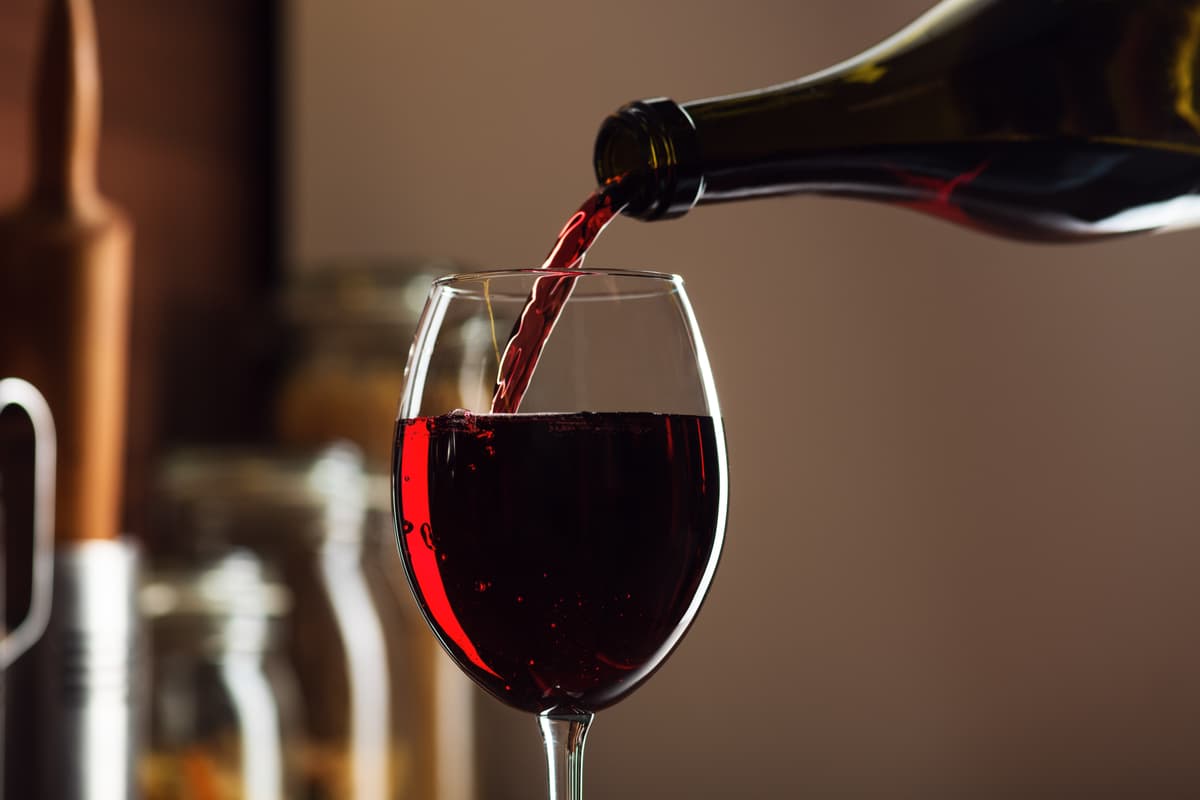Wine Industry Braces for Impact of Trickle-Down Health Recommendations
Coming revised dietary guidelines in America could include a zero-tolerance policy on alcohol.

Global winemakers already reeling from a downward trend in wine sales may expect a further drop in demand if the American advisory committee responsible for issuing dietary guidelines adopts the new zero-tolerance policy of the World Health Organization.
This week, wine industry blogger Tom Wark, an Oregon-based consultant and marketer, reported that a “well-placed source” in Washington told him that the federal government’s coming 2025 Dietary Guidelines will recommend that “no amount of alcohol is acceptable for a healthy lifestyle.”
Though anonymous and from one source, the statement is casting an ominous pall over the nation’s $170 billion wine industry.
“From a producer’s perspective, many wine grape growers, hop growers, wine makers, brewers, and distillers across my district and the country would be decimated. It would cripple the global market for these products and breakdown market access for specialty producers like the ones in Central Washington,” Representative Dan Newhouse of Washington, the co-chairman of the Congressional Wine Caucus, tells the Sun.
Already, in January 2023 the WHO stated that “no level of alcohol consumption is safe” and since then has repeatedly declared alcohol, regardless of its form – beer, wine or spirit – “a toxic, psychoactive, and dependence-producing substance” that “causes at least seven types of cancer, including the most common cancer types, such as bowel cancer and female breast cancer.”
That shift has created a trickle-down effect. Canada’s publicly funded non-governmental Center on Substance Abuse and Addiction has advised Health Canada to adopt the WHO’s lower guidelines. The head of the National Institutes of Health’s National Institute on Alcohol Abuse and Alcoholism, George Koob, suggested last summer that America could follow suit.
“I don’t want to compare what the WHO’s doing to prohibition in the teens and ’20s. It’s a different situation altogether, but the WHO would be satisfied if there was a prohibition of alcohol,” Mr. Wark told the Sun.
America will release its revised dietary guidelines in 2025. Since 1980, the quinquennial update has advised drinking “in moderation,” defined as one to two drinks per day. In 1990, the guidelines changed to one drink per day for women and two drinks per day for men. In 2020, the guidelines maintained its recommended quantities but added that “drinking less is better for health than drinking more” and advised against certain adults, like pregnant women, from partaking.
Unlike in previous years, however, this cycle’s Dietary Guidelines Advisory Committee is supposed to take its cues from the National Academies of Sciences, Engineering and Medicine rather than from Health and Human Services. The Academies were awarded $1.3 million in the 2023 Consolidated Appropriations Act to study the relationship between alcohol consumption and health outcomes.
Doubts are also being raised about the legal and scientific rigor behind the new recommendations, though. In April, two Republican House Oversight and Accountability Committee members, Representatives James Comer of Kentucky and Lisa McClain of Michigan, raised concerns that the Biden Administration had transferred the Academies’s mandate to the Interagency Coordinating Committee on the Prevention of Underage Drinking, led by the Substance Abuse and Mental Health Services Administration.
The lawmakers argue that since Health and Human Services failed to address scientific questions posed in 2022, the Biden Administration appears to be moving toward approving Dietary Guidelines that “by default recommend that Americans consume no alcohol whatsoever” without studies to back them. The lawmakers urged the Academies to “resist interference by other government agencies in this process.”
“Any change to the dietary guidelines should be fully transparent and use the best science,” Representative Mike Thompson, Mr. Newhouse’s co-chair representing Napa Valley, tells the Sun.
“For the Biden Administration to recommend that ‘no amount of alcohol is acceptable for a healthy lifestyle,’ through a secret and questionable review process is no more than a misguided attempt to try and tell responsible Americans how they should live their lives,” Mr. Newhouse says.
Multiple studies since the 1990s have shown moderate consumption reduces inflammation in blood vessels, blockages and the oxidation of bad cholesterol, which in turn reduces the risk of stroke. A cardiologist, Madaiah Revana, who owns Revana Vineyard in Napa as well as Alexana in Oregon and Corazon del Sol in Argentina, said moderate consumption has also been linked to reduced incidence of Alzheimer’s disease.
“Drinking a lot of wine can cause a risk of cancer, but in moderation it can reduce the incidence of esophageal and gastric cancer,” Dr. Revana tells the Sun.
For wine growers, the push toward zero tolerance is the latest in a disconcerting trend away from wine. Purchase data show that younger people are more likely to drink spirits or smoke cannabis.
Silicon Valley Bank’s “State of the U.S. Wine Industry 2024” reported that in the United States, which has the highest wine consumption in the world, consumers purchased 15.4 million fewer cases of wine in 2022 than in 2020, down from 344.5 million cases to 329.1 million.
At the same time, between 2012 and 2022, the percent of people aged 19-30 who used cannabis monthly increased from 16.6 percent to 28.8 percent while alcohol use declined from 68.4 percent to 67.5 percent.
“The legalization of cannabis (on the state level) generally has provided an alternative recreational vehicle for people and a lot of younger people,” said a hospitality lawyer, Jack Gordon, the president of the Wine and Food Society of New York. “I have kids in their 30s who are professionals but they choose to smoke. They, as a result, drink less even though I have a really good wine cellar.”
According to a survey conducted by Wine Opinions and Colangelo & Partners, 58 percent of respondents in the 21 to 39 age range said that two glasses of wine or less per day is a potential health risk. Two-thirds of that age group also said it would reduce its current consumption or adopt new guidelines if told to limit drinking to two-five glasses per week.
“There are a lot of implications to this, but the most important implication for the wine industry is it will, in fact, lead to people drinking less wine under the idea that they’re being healthier,” Mr. Wark said.
While mass production wines may be hurt by the decline in overall sales, Dr. Revana, whose Napa wines start in the $95 range, said he is confident that the market shift will shake out on its own.
“Not everybody is smoking marijuana or doing all of those things,” he said. “Even though they may be drinking more spirits and beer than wine, they are young people. They will grow up. … As they grow up and grow more mature and more sophisticated, I think they will change.”

